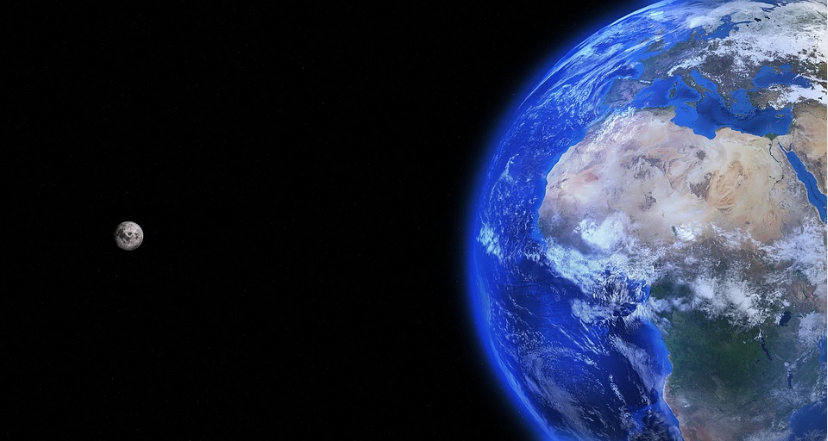An overview of the movement of the moon
The moon is the closest celestial body to the earth, and it moves in such a way that it completes one revolution around its axis at the same time that it completes one revolution around the earth with respect to the stars, creating a simultaneous rotation between and thus the face of the moon itself always remains in front of the earth and The reason for the coincidence between the rotation of the Moon around itself and its rotation around the Earth is the tidal forces arising from the Earth, which determine the direction of the Moon. As for the Earth, it should be noted that the speed of the Moon's rotation around the Earth is 3,683 km / h.
The relationship of the movement of the moon to its phases
During the revolution of the moon around the earth, different parts of the moon are exposed to sunlight, while other parts are dark, and therefore the appearance of the moon differs from the observer on Earth, resulting in what is known as the lunar phase. It is worth noting that the shape of the moon depends on the relative positions of the moon, the earth and the sun. Thus, the moon goes through different lunar phases, beginning with the new moon, then the crescent, followed by the first square, then the crescent, and then the full moon which appears as a complete circle of light in the sky. Then the crescent wanes, until it returns again to the new phase in which the side of the moon facing the Earth appears dark.
The phases of the moon are related to the phenomena of lunar eclipses, where the eclipse occurs at the full moon, and falls in the shadow of the Earth between the sun and the moon, while the eclipse occurs at the full moon. sunset, which is between the sun and the earth, but it is worth noting that a lunar eclipse does not occur when the moon is in the full moon phase; Because if this is true, the eclipse will happen once a month when the moon is in this phase, but what actually happens is that the moon's orbit around the earth is tilted by 5 degrees from the earth's orbit around the sun, which means that often the moon is above the plane of the earth's orbit Or slightly below it, and therefore it is outside the Earth’s shadow area that blocks the sun’s rays, and this means that a lunar eclipse does not occur in these cases except that the moon’s orbit intersects with the plane of the Earth’s orbit two to four times a year, causing the moon to fall within the Earth’s shadow region And a lunar eclipse occurs.
The duration of the moon's movement
The moon rotates on its axis in a period of about 27 days, and it revolves around the Earth in relation to the stars in a period of 27,322 days, and this period is known as the sidereal month, while it revolves around the Earth relatively. to the Sun every 29. 5 days, during which time it passes through eight lunar phases, and this period is known as the Compound month.
Moon movement effect
The moon has a huge impact on Earth. Without it, severe climate change would lead to large differences in temperature and daylight throughout the year. The different phases of the moon also affect coral reefs and certain types of crabs, worms, and fish that sense and use their light. As a catalyst for the initiation of reproduction, the Moon also takes an active part in shaping the tides due to its gravity, as it draws the oceans towards it, causing the water levels to rise and thus training high. The tides are on the side of the Earth closest to the moon, and knowing the movement of the tides is important for fishermen, marine navigation and ship traffic.



Comments
Post a Comment